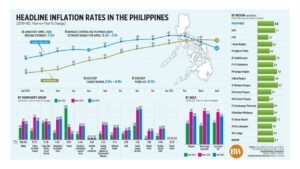PHL pork imports expected to fall this year as poultry shipments rise

THE Philippines is expected to import less pork this year amid a broader global downtrend in trade, according to the UN Food and Agriculture Organization (FAO).
In a report, the FAO projected the global trade of pork to dip to 11.4 million metric tons (MT) in 2023 from the 11.5 million MT estimated last year.
The FAO said the supply of exportable quantities in producing countries has declined as supply levels rise in East Asia.
“The latest forecasts point to reduced pig meat imports by the US, Japan, Mexico, Vietnam and the Philippines, with likely higher imports by the UK, China, Canada, Uruguay and the Republic of Korea,” the FAO said.
The FAO projected Philippine pork imports this year at 489,000 MT, down 2.02%. Philippine pork production is expected to increase 3.62% to 1.26 million MT, upgraded from an earlier estimate of 1.22 million MT.
“Similarly, domestic production recoveries could lead to subdued imports by Vietnam and the Philippines, even though the continuation until 31 December 2023 of the reduced import tariff in the latter may encourage more imports.”
Hog production rose 5.1% to 437.99 thousand MT, on a liveweight basis, in the first quarter, according to the Philippine Statistics Authority.
The Bureau of Animal Industry tallied pork imports of 114.8 million kilos, accounting for 43.2% of all meat imports.
The executive order (EO) setting the current tariff rates for imported pork is set to expire by the end of 2023, which would bring about a reversion to the previous tariff rates of 30% within the minimum access volume quota and 40% for shipments in excess of the quota.
At present, the pork tariff rate is 15% for in-quota imports, and 25% for out-of-quota following EOs issued by presidents Rodrigo R. Duterte and Ferdinand R. Marcos, Jr.
Meanwhile, the FAO forecast global poultry meat trade to rise 1% to 16.4 million MT this year, driven by expanded shipments to Asia, Central America, and the Caribbean.
“Significant increases in poultry meat imports are expected for China, Saudi Arabia, Iraq, the European Union and South Africa, as well as in the Philippines, Canada and the Democratic Republic of the Congo, due to growing internal demand amid tight domestic supplies, high prices, more active food services sales and relative affordability,” it said.
The FAO did not provide a specific projection for the Philippines.
First-quarter poultry production in the Philippines rose 3.3% to 470.21 thousand MT while imports amounted to 102.7 million kilos. — Sheldeen Joy Talavera




